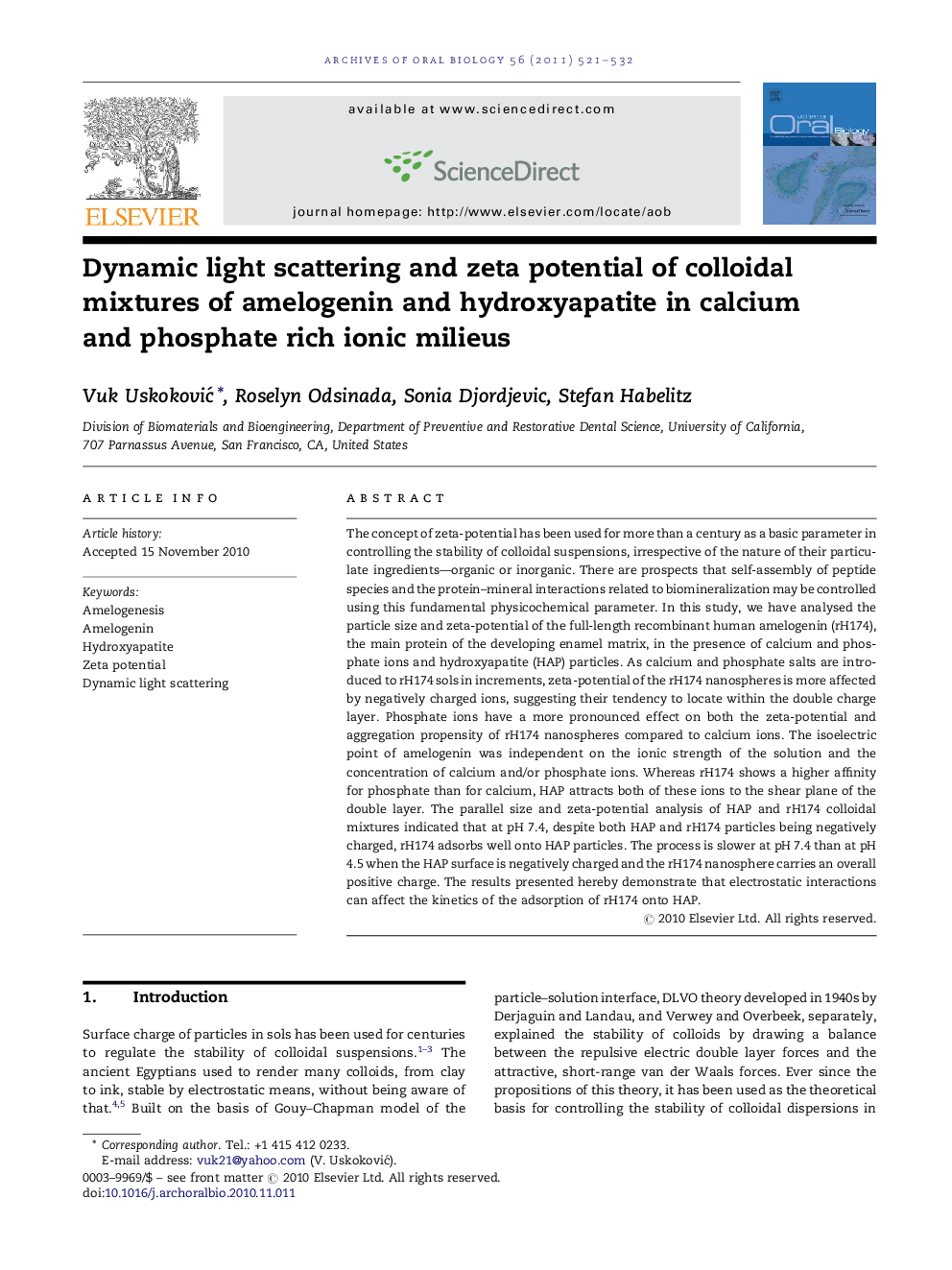| کد مقاله | کد نشریه | سال انتشار | مقاله انگلیسی | نسخه تمام متن |
|---|---|---|---|---|
| 6052059 | 1583347 | 2011 | 12 صفحه PDF | دانلود رایگان |

The concept of zeta-potential has been used for more than a century as a basic parameter in controlling the stability of colloidal suspensions, irrespective of the nature of their particulate ingredients-organic or inorganic. There are prospects that self-assembly of peptide species and the protein-mineral interactions related to biomineralization may be controlled using this fundamental physicochemical parameter. In this study, we have analysed the particle size and zeta-potential of the full-length recombinant human amelogenin (rH174), the main protein of the developing enamel matrix, in the presence of calcium and phosphate ions and hydroxyapatite (HAP) particles. As calcium and phosphate salts are introduced to rH174 sols in increments, zeta-potential of the rH174 nanospheres is more affected by negatively charged ions, suggesting their tendency to locate within the double charge layer. Phosphate ions have a more pronounced effect on both the zeta-potential and aggregation propensity of rH174 nanospheres compared to calcium ions. The isoelectric point of amelogenin was independent on the ionic strength of the solution and the concentration of calcium and/or phosphate ions. Whereas rH174 shows a higher affinity for phosphate than for calcium, HAP attracts both of these ions to the shear plane of the double layer. The parallel size and zeta-potential analysis of HAP and rH174 colloidal mixtures indicated that at pH 7.4, despite both HAP and rH174 particles being negatively charged, rH174 adsorbs well onto HAP particles. The process is slower at pH 7.4 than at pH 4.5 when the HAP surface is negatively charged and the rH174 nanosphere carries an overall positive charge. The results presented hereby demonstrate that electrostatic interactions can affect the kinetics of the adsorption of rH174 onto HAP.
Journal: Archives of Oral Biology - Volume 56, Issue 6, June 2011, Pages 521-532